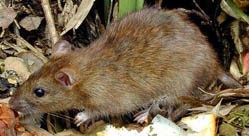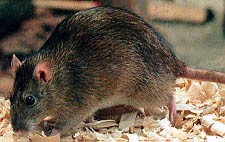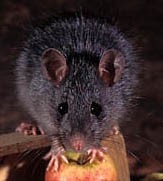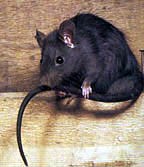
Serving Southwest Ohio and Northern Kentucky

info@TheBugBusters.net.
Attention Realtors and Loan Officers: Click the link for our online inspection sheet.
About Rats
Rats
Rats are rodents. The word “rodent” means to gnaw. Rodents will gnaw through many types of materials to reach a location including lead sheathing, cinder block, aluminum siding and some concrete. Rats eat and spoil our food with their feces, urine, and fur. They can be found not only in our homes, but also in supermarkets, restaurants, warehouses, food processing facilities, livestock facilities, and farm fields. Under stable conditions, rat movement is normally limited to approximately 98 to 164 feet. If conditions are unstable or there are changes such as a new building, they may expand the diameter. They may also expand their range in protected areas such as in sewers, passages, between buildings, and under groundcovers. Rats are nocturnal with their peak activity being at dusk or before dawn.
There are two (2) common types of rats, Norway, and Roof.
Norway rat:
An adult Norway rat can weigh 12-18 oz. with a body length of 6-8 inches long. The nose is blunt with small ears, and small eyes. The fur is shaggy and coarse with variations in color. The tail is shorter than the head and body combined and scaly. Norway rats are larger and more aggressive than roof rat. They are light grey or brown, with fur that is shaggy and an underside that is white. They weigh 7-18 ounces and have a body that is 6-9.5 inches long, excluding tail They prefer foods with a high protein or carbohydrate content but will eat almost any type of food. They need water to survive, unlike mice.
The Norway rat generally prefers to live in underground tunnels. On farms, they will be near a food source: barns, granaries, livestock buildings, and silos. In the cities, they will be in the ground if there is available space but have been known to live entirely inside buildings. Rats will seek food outside, but many times will come inside at night to forage for food and return to their burrows. Needing a water source, they can obtain water from toilets, sinks, rain puddles, or condensation from utility pipes. Their nesting burrows on the outside are often along the foundation of walls. As the rat family grows, more burrows are built, resulting in a network of underground tunnels. Inside, the Norway rat commonly nest on the lower levels, but if the population is too large, they may be found in the attic and ceiling areas. Their nests are built from soft material like paper or grass chewed into small pieces. Their droppings are capsule shaped. Rats will climb, if necessary, to enter a building. The Norway rat is an excellent swimmer.


Adult Norway Rats
Roof Rat: The Roof Rat is smaller and slenderer than the bigger Norway rat. The tail is longer than the head and body combined. They have large ears and a pointed nose. The fur is smooth, as opposed to the Norway rat, which is shaggy. Roof rats tend to be grey to black in color, 6 to 8 inches long, excluding tail and weigh 5-9 ounces. They prefer seeds, nuts, fresh vegetables, and fruits, but will eat meat and grain products. They need water to survive, unlike mice.
The Roof Rat is a climber, commonly nesting in areas above the ground: trees, vines, attics, ceiling voids, or in voids along the roof line. These rats enter your home much like squirrels. As their population grows, they will nest in underground burrows. Their droppings are spindle shaped.


Adult Roof Rats
Dayton, OH 45401-3151
Phone 937-256-6475
info@TheBugBusters.net
Powered by w3.css